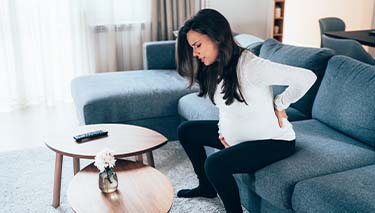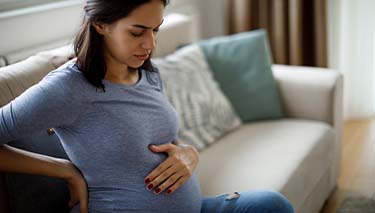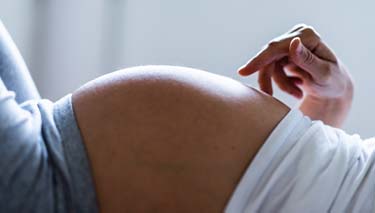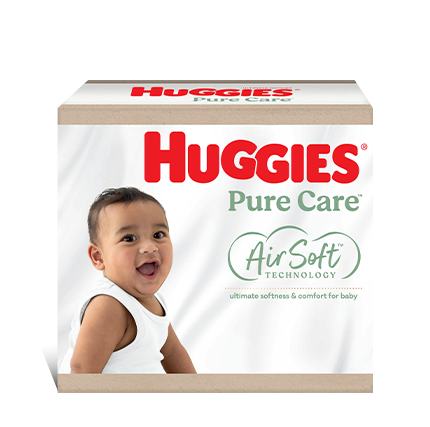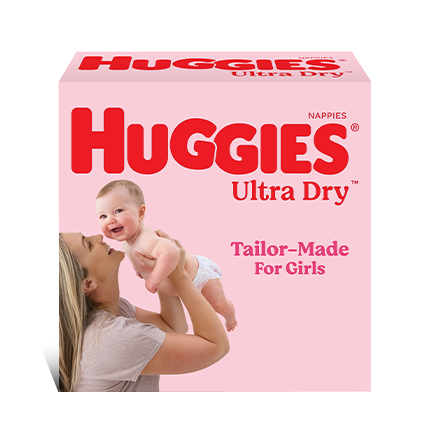The baby's fine, but what about me?
Research has proven that urinary incontinence (wetting) is strongly connected with pregnancy and childbirth. And although having a baby is a natural and normal life event, for many women it can have long lasting physical effects, specifically on their bladder function.
If you're one of the one in three women who've had a baby and wet themselves, don t feel you need to just learn to live with it. There are several things you can do to regain bladder control. The first is to not feel embarrassed if you're leaking urine (wee). Almost always, incontinence is treatable. Help is available and there are many excellent sources of information and support.
Remember
Bladder control issues after birth generally improve in the first six months. However, pelvic floor muscles can need help to become strong and work effectively once they are weakened.
Make time every day to invest into your pelvic floor!
Incontinence is generally one of three types
Stress incontinence when laughing, coughing, sneezing, lifting or jumping. This is the type many women experience after childbirth.
Urge incontinence having trouble holding on after a sudden urge to wee.
Mixed incontinence a combination of both.
Why is incontinence so common for women?
During pregnancy and childbirth, the muscles of the pelvic floor come under a significant amount of strain. These muscles help to keep the bladder closed and wee inside the bladder until getting to a toilet. When they are weakened, wee leaks out involuntarily. During birth the pelvic floor muscles can also be damaged and need to be strengthened by doing specific exercises which target the pelvic floor.
Hormones also affect the way the bladder functions. During pregnancy and menopause, pelvic floor changes are more common.
What about me?
In these busy days of caring for your newborn baby, you could be forgiven for thinking there's no time left for you. But it's essential to take moments each day to think about your own self-care too. This isn t only related to eating a nutritious diet but reflecting on how well your body is working.
It can take up to six weeks or longer for women to recover after childbirth. If your baby's birth was complicated, or you had a caesarian section, it could take a few months for you to feel a new type of normal. If you're finding you need to wear sanitary pads even if you've stopped bleeding, you may have bladder leakage.
Many women experience some degree of bladder leakage during their pregnancy and after their baby's birth. Pregnancy creates physical changes to the mother's bladder and urethra and hormones affect the normal function of the bladder and its relationship to other pelvic organs.
General health tips to reduce the risk of incontinence
Being overweight or obese during pregnancy brings a higher risk of incontinence and light bladder leakage. The weight of the uterus pressing down on the bladder means more urgency to empty the bladder and being less able to hold on until getting to a toilet. Speak with a dietician if you're struggling to lose post pregnancy weight.
Having a chronic cough also increases the risk of developing incontinence. If you're coughing a lot, see your GP about the cause and effective treatment.
There is a higher risk of incontinence for pregnancy women who've had a vaginal birth previously and even higher risk if they've had a previous forceps delivery. If this is you, a physiotherapist could help.
Some women may have a genetic tendency to developing pelvic floor problems due to the type of collagen they produce. This is a type of protein which works like glue, holding the bones, skin and ligaments together. Although you cannot change your genetics, you can change your diet. Collagen rich foods are fruits, vegetables and protein rich foods e.g. meat, chicken and fish.
Be mindful that some foods can irritate the bladder and increase wee production. Caffeine and citrus foods are common culprits.
General healthy bladder tips
- Stay active. Guidelines around physical activity suggest at least 30 minutes of physical activity each day. As humans, we are designed to move. Take your baby out for a pram ride each day, put them in a sling and just walk.
- Eat a healthy, high fibre diet. Avoid constipation by drinking lots of water each day and foods which are rich in roughage.
- Exercise your pelvic floor. Remember, it can take time and repetition to build muscle strength and tone. Get a referral to a physiotherapist who specializes in pelvic floor strength.
- Avoid going to the toilet just in case . This will prevent your bladder from filling up to its normal capacity, making it shrink. The bladder is made up of muscle fibres which are designed to stretch and then contract. The bladder should be able to hold around 300 mls of wee before it needs to be emptied.
Ways to remember to do your pelvic floor exercises
Humans tend to learn new habits when we link triggers as reminders to do something. For example, when we get in a car we automatically put on our seatbelt.
Doing your pelvic floor exercises will become second nature if you link them to something else you frequently do:
- When you have a drink of water.
- When you change your baby's nappy.
- When you walk into your bathroom.
- When you sit and feed your baby.
Download an app to help guide and remind you.
For more information check:
https://www.continence.org.au/who-it-affects/women/pregnancy-and-childbirth
Written for Poise by Jane Barry, midwife and child health nurse, 03/06/2021
Visit the Poise Pelvic Floor Support Hub with free expert guidance including a free physiotherapy-led online program 12 Weeks to a Stronger Pelvic Floor
Whilst you are training your pelvic floor POISE can help keep you comfortable and dry and protected from leaks.
Get a free sample here.


Last Published* July, 2024
*Please note that the published date may not be the same as the date that the content was created and that information above may have changed since.




